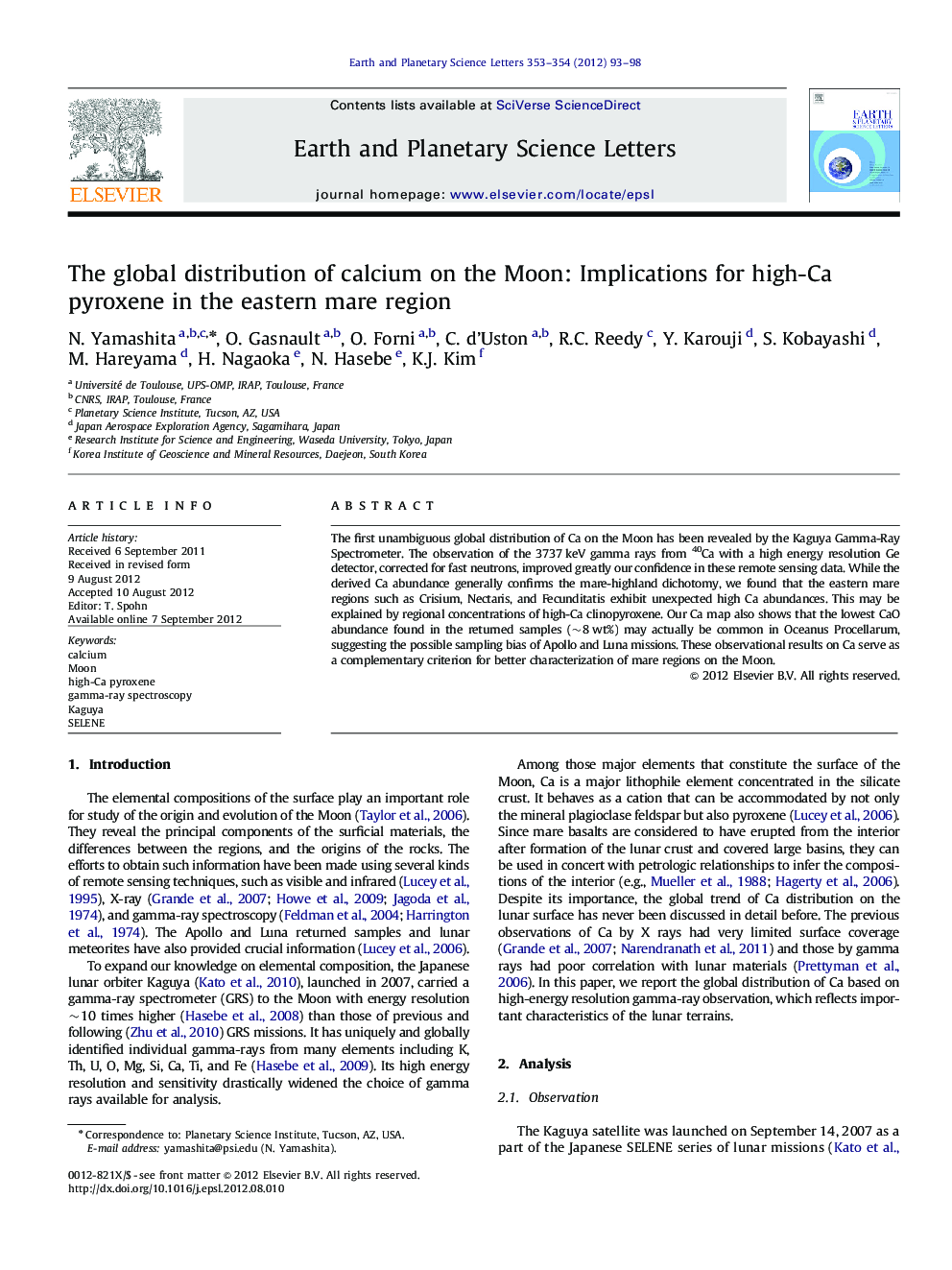| Article ID | Journal | Published Year | Pages | File Type |
|---|---|---|---|---|
| 6430477 | Earth and Planetary Science Letters | 2012 | 6 Pages |
The first unambiguous global distribution of Ca on the Moon has been revealed by the Kaguya Gamma-Ray Spectrometer. The observation of the 3737Â keV gamma rays from 40Ca with a high energy resolution Ge detector, corrected for fast neutrons, improved greatly our confidence in these remote sensing data. While the derived Ca abundance generally confirms the mare-highland dichotomy, we found that the eastern mare regions such as Crisium, Nectaris, and Fecunditatis exhibit unexpected high Ca abundances. This may be explained by regional concentrations of high-Ca clinopyroxene. Our Ca map also shows that the lowest CaO abundance found in the returned samples (â¼8Â wt%) may actually be common in Oceanus Procellarum, suggesting the possible sampling bias of Apollo and Luna missions. These observational results on Ca serve as a complementary criterion for better characterization of mare regions on the Moon.
:⺠Global distribution of Ca on the Moon is derived from Kaguya GRS data. ⺠Observation by high precision Ge detector greatly improved confidence in measurement. ⺠Ca was found to be more abundant in the east mare region than in the west. ⺠Selective concentration of high-Ca pyroxene in the eastern mare region is implied. ⺠Ca provides a complementary criterion to characterize the lunar thermal history.
